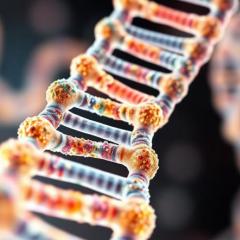By Dr Fiona McMillan
In a study published this month in the journal Blood, UQDI’s Professor Maher Gandhi and his colleagues at Stanford University have revealed a new technique that enables early detection of non-Hodgkin lymphoma. Because this technique looks for genetic signatures of cancer cells in a blood test, it will enable clinicians to regularly monitor patients and rapidly identify those who have begun to relapse.
Non-Hodgkin lymphomas are a cancer of the immune cells, and they are the fifth and sixth most common form of cancers in women and men, respectively. Despite their prevalence, methods of detecting these cancers remain limited, usually requiring PET or CT scans.
But three years ago, Professor Gandhi made an interesting discovery; he found that lymphoma cells release their DNA into the bloodstream as they die. Because the turnover rate of these cancer cells is relatively high, this happens quite often. Professor Gandhi realised this DNA could be used to not only profile the tumour but it could be used as a means of detecting cancer in the bloodstream long before symptoms presented.
To explore this possibility, he teamed up with the research team at Stanford, led by Assistant Professor Ash Alizadeh, who is an expert in blood-based DNA assays. Using clinical samples and data provided by Gandhi, Alizadeh and his colleagues developed a method that enabled them to accurately detect tumour DNA in blood plasma. While not all patients had enough circulating tumour DNA to be detectable, the technique was able to identify all patients who were relapsing and in many cases, was able to identify the presence of cancer prior to relapse.
Gandhi sees this not only as valuable in its own right for patients with non-Hodgkin lymphoma, but he also believes the technology has potential to be developed for use in other cancer types. Moreover, because of the ease and accuracy of the method, there may be scope to one day use this approach to detect cancer in the wider population.
For more on the story from the team at Stanford University, click here.



